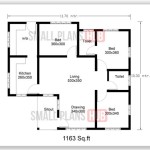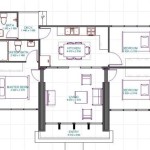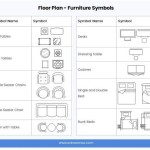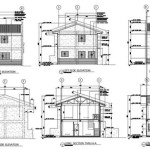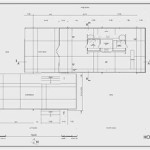Is There An App To Make Floor Plans? Exploring Digital Solutions for Space Design
The realm of interior design and spatial planning has been significantly impacted by technological advancements, particularly the proliferation of mobile applications. The question of whether an application exists to create floor plans finds an affirmative answer. A plethora of applications are available, catering to a diverse range of users from professional architects to homeowners embarking on renovation projects. These applications offer varying functionalities, complexity levels, and pricing structures, designed to streamline the process of visualizing and documenting architectural layouts.
The traditional method of drafting floor plans involved manual measurements, sketching, and potentially the use of Computer-Aided Design (CAD) software on desktop computers. Mobile applications offer a more accessible and often more intuitive approach. They bring the power of digital design directly to the user's fingertips, enabling on-site measurements, real-time adjustments, and collaborative sharing of designs. The ease of use and portability of these applications have democratized the floor planning process, allowing a wider audience to engage with spatial design concepts.
Ease of Use and Accessibility: The Key Advantages
One of the primary benefits of using floor plan applications lies in their ease of use. Many applications are designed with user-friendly interfaces, minimizing the learning curve associated with traditional CAD software. Features such as drag-and-drop functionality, pre-loaded furniture libraries, and automated measurement tools simplify the design process, making it accessible to individuals with limited technical expertise. The intuitive nature of these interfaces empowers users to experiment with different spatial arrangements and visualize their ideas quickly and efficiently.
Accessibility is another significant advantage. Mobile applications can be used on smartphones or tablets, providing users with the flexibility to create and modify floor plans anywhere, anytime. On-site measurements can be taken directly using the device's camera and augmented reality technology, eliminating the need for manual measuring tools and paper sketches. This portability allows for immediate adjustments and real-time feedback from clients or collaborators. The convenience of having a digital drawing tool readily available fosters a more iterative and responsive design process.
Furthermore, many applications offer cloud-based storage and synchronization capabilities. This allows users to access their projects from multiple devices and collaborate with others seamlessly. Team members can view, comment on, and edit floor plans in real-time, facilitating effective communication and coordination. This collaborative aspect is particularly valuable for professionals working on complex projects or those who need to share designs with clients remotely.
Functionality and Feature Sets: Meeting Diverse Needs
The available floor plan applications offer a wide range of functionalities to cater to diverse user needs. Some applications are designed for basic floor plan creation, allowing users to draw walls, add doors and windows, and arrange furniture. These applications are often ideal for homeowners planning a simple renovation or rearranging their existing space. Other applications offer more advanced features such as 3D modeling, virtual tours, and integration with CAD software. These features are typically used by architects, interior designers, and construction professionals who require a more comprehensive set of tools for detailed design and documentation.
Specifically, functionalities commonly found in floor plan applications include:
*Measurement Tools:
Applications often incorporate laser distance measurement integration or utilize augmented reality (AR) to measure spaces accurately. These features significantly reduce the potential for human error compared to traditional measuring methods. *Furniture Libraries:
Pre-loaded libraries with furniture models and architectural elements simplify the design process. Users can easily drag and drop these elements into their floor plans, eliminating the need to create them from scratch. *Annotation and Collaboration:
Applications allow users to add notes, dimensions, and other annotations to their floor plans. Collaborative features enable multiple users to view and edit the same floor plan simultaneously, facilitating real-time feedback and communication. *3D Visualization:
Many applications offer 3D rendering capabilities, allowing users to visualize their floor plans in a realistic three-dimensional environment. This feature is particularly useful for showcasing designs to clients and for identifying potential design flaws. *Export and Import:
The ability to export floor plans in various file formats, such as PDF, DWG, and DXF, is crucial for sharing designs with other professionals and for integrating them into other software applications. Similarly, the ability to import existing floor plans allows users to modify and build upon previous work.The selection of an application should be guided by the specific requirements of the project and the user's level of expertise. For simple tasks, a basic application with essential features may suffice. However, for complex projects requiring detailed design and documentation, a more advanced application with a comprehensive set of tools is necessary.
The pricing structure of floor plan applications also varies significantly. Some applications are free to use, while others require a subscription or a one-time purchase. Free applications typically offer limited functionality and may contain advertisements. Subscription-based applications often provide access to a wider range of features and may include cloud storage and collaborative tools. The cost of an application should be carefully considered in relation to its functionality and the user's budget.
Integration with Existing Workflows: Enhancing Efficiency
The effectiveness of a floor plan application is not only determined by its features but also by its ability to integrate seamlessly with existing workflows. Many applications offer integration with other software applications, such as CAD software, project management tools, and CRM systems. This integration allows users to streamline their design process and improve overall efficiency.
For example, an architect may use a floor plan application to create a preliminary design concept on-site and then export the design to a CAD software for further refinement and detailing. Similarly, a contractor may use a floor plan application to track progress on a construction project and integrate the data with a project management tool. The ability to seamlessly exchange data between different applications eliminates the need for manual data entry and reduces the potential for errors.
Furthermore, some applications offer Application Programming Interfaces (APIs) that allow developers to integrate their own custom features and functionality. This customization allows users to tailor the application to their specific needs and further enhance its integration with existing workflows. An example of this would be a real estate company integrating the floor plan application into their internal CRM system for seamless property management and client communication.
The choice of a floor plan application should therefore consider its compatibility with existing software and systems. A well-integrated application can significantly improve productivity and reduce the time and effort required to complete design and construction projects.
The increasing sophistication and accessibility of floor plan applications have revolutionized the way individuals approach space design and planning. From simplifying home renovations to facilitating complex architectural projects, these applications offer a powerful set of tools for visualizing, documenting, and collaborating on spatial layouts. Choosing the right application, taking into account ease of use, functionality and integration capabilities, is paramount to maximizing its benefits and achieving desired design outcomes.

Floor Plan App Live Home 3d

20 Best Floor Plan To Create Your Plans Foyr

Roomsketcher App

Floor Plan Creator Create Detailed And Precise Plans App For Android

Roomsketcher App

20 Best Floor Plan To Create Your Plans Foyr

Floor Plan Maker
Floor Plan Creator On Google Play
Which Is Best App For Making Floor Plans Quora

Draw Floor Plans With The Roomsketcher App

